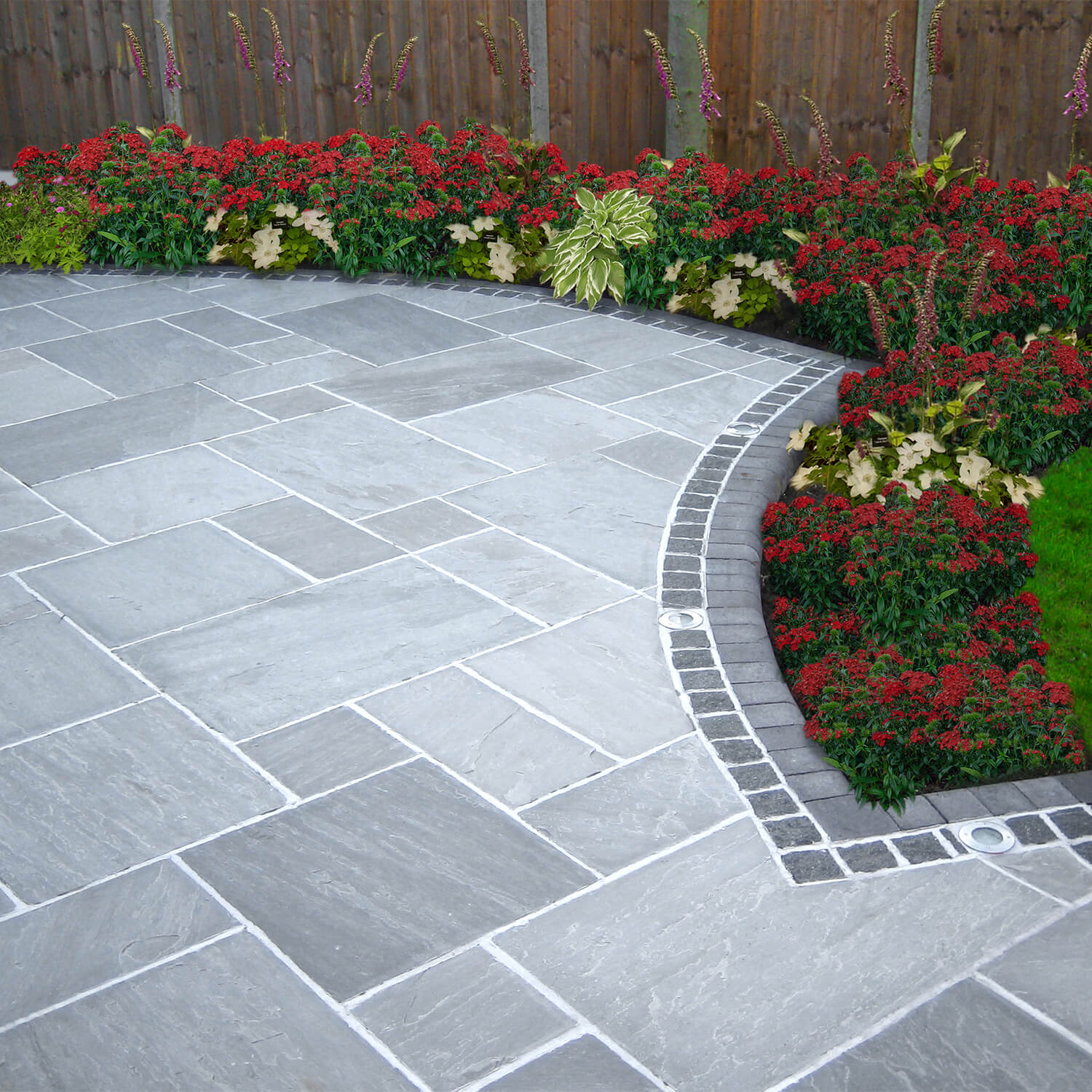Sandstone is without question one of the most popular paving materials in the UK.
And, with its wide variety of colours, patterns and a beautiful riven surface, it’s easy to see why.
It is an ideal choice for landscaping projects, both small and large because it is affordable at the same time as being beautifully diverse in style and tone.
What are the different types of sandstone?
Sandstone paving is so popular for its versatility and is available is a range of patterns and textures such as:
””
””
””
””
””
””
””
””
””
””
””
””
What are the different types of sandstone finishes?
There is a wide range of finishes available for sandstone paving to suit your project requirements.
Here are some of the most popular ones:
-
Hand-cut sandstone
-
Tumbled
-
Honed
-
Machine/Sawn cut
-
Brush Polished
-
Sandblasted
-
Bottom Calibrated
-
Polished
Which is better; sandstone or limestone paving?
Sandstone and limestone are two of the go-to options for paving in the UK, but which is better?
Both are strong and versatile, able to withstand heavy footfall – or the weight of a vehicle – and last for many years.
That durability also means they both require little maintenance, and can be cleaned easily with soap and water or by jet washing.
However, when comparing the price, sandstone is by far the more affordable choice.
It also has a more diverse array of colours and patterns within each batch.
How do you lay sandstone paving?
The process of laying sandstone is the same as for any other type of natural stone paving.
The first step is to remember that flagstones should always be laid completely flat on a full bed of sand and cement that can support the whole slab.
The bed must consist of six parts of sharp sand or an all-in ballast mix with one-part cement.
Ensure the mixture is of the correct consistency before spreading a layer that is 50mm thick.
It must be deeper than the slab itself.
Gently lay the slab down onto the bed, and firmly tap it with a rubber mallet until it is level.
Repeat this process, one slab at a time, ensuring you leave a gap of 10-12mm between each.
Once the area is complete, to finish you need to fill those gaps.
This is also referred to as pointing your mortar joints.
To make a pointing mortar, you should mix one-part cement with six-parts of sand; this can either be soft sand or building sand.
Once you have an appropriate consistency, use the pointing trowel to insert the mortar into the joints with the edge and a pointing bar to press it down.
After every joint has been filled, you should take a stiff brush to remove any excess mortar before it dries completely.
Your sandstone paving should then be complete and after 24-48 hours your mortar should have set and you will be able to walk across your paving!
How do you clean sandstone paving?
One of the key benefits of sandstone is how straightforward it is to look after, and clean, compared to other paving materials.
It can be cleaned by brushing the surface to remove any dirt, dust or debris lying on top.
Then, using soapy water, mop the surface to keep it looking fresh throughout the year.
Any stubborn stains and moss can be removed with a simple bleach mixture that is left for 15 minutes before being washed away with a hose or pressure washer.
Contact us
At The Premium Paving Company, we have built our reputation and rapport with global contacts over the past 15 years to ensure we are the UK’s paving supplier of choice.
If you are interested in finding out more about our sandstone paving options for your project, or would like a sample from our natural stone paving range, then don’t hesitate to get in touch with us today.








